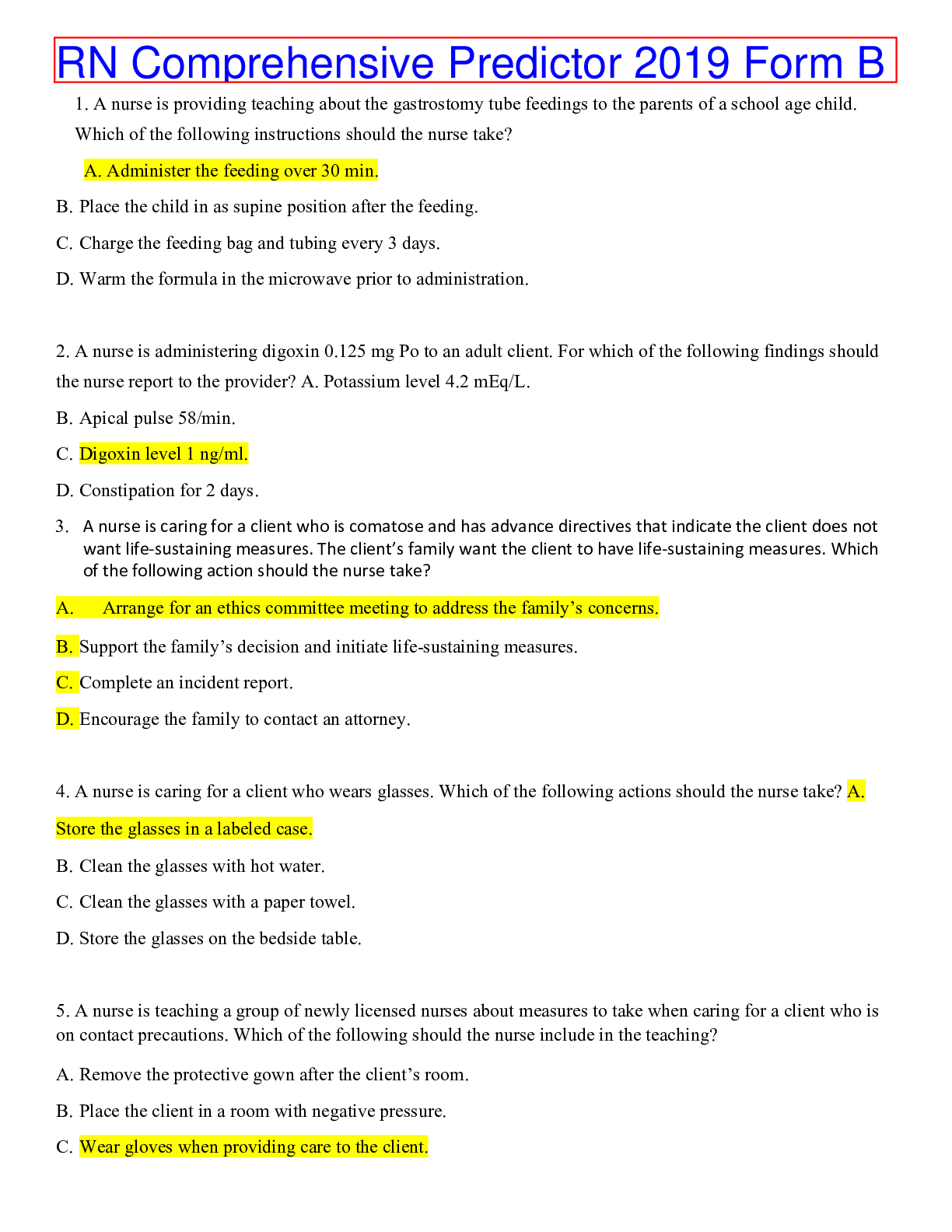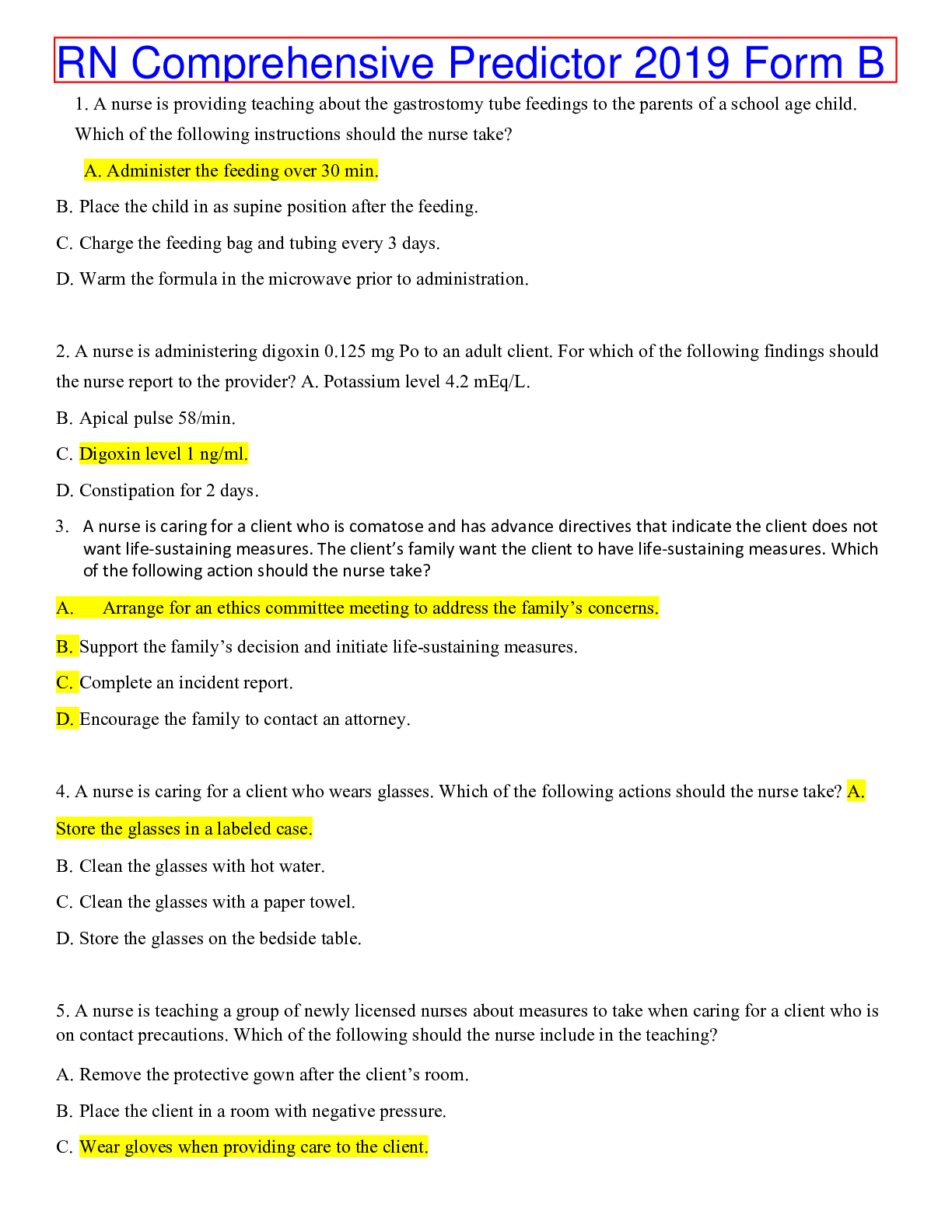ATI COMPREHENSIVE PREDICTOR 2019 FORM B WITH 180 Questions and Answers( Verified)
Course
Project Management
Subject
Chemistry
Category
Questions and Answers
Pages
42
Uploaded By
ATIPROS
Preview 5 out of 42 Pages


Download all 42 pages for $ 9.40
Reviews (0)
$9.40
